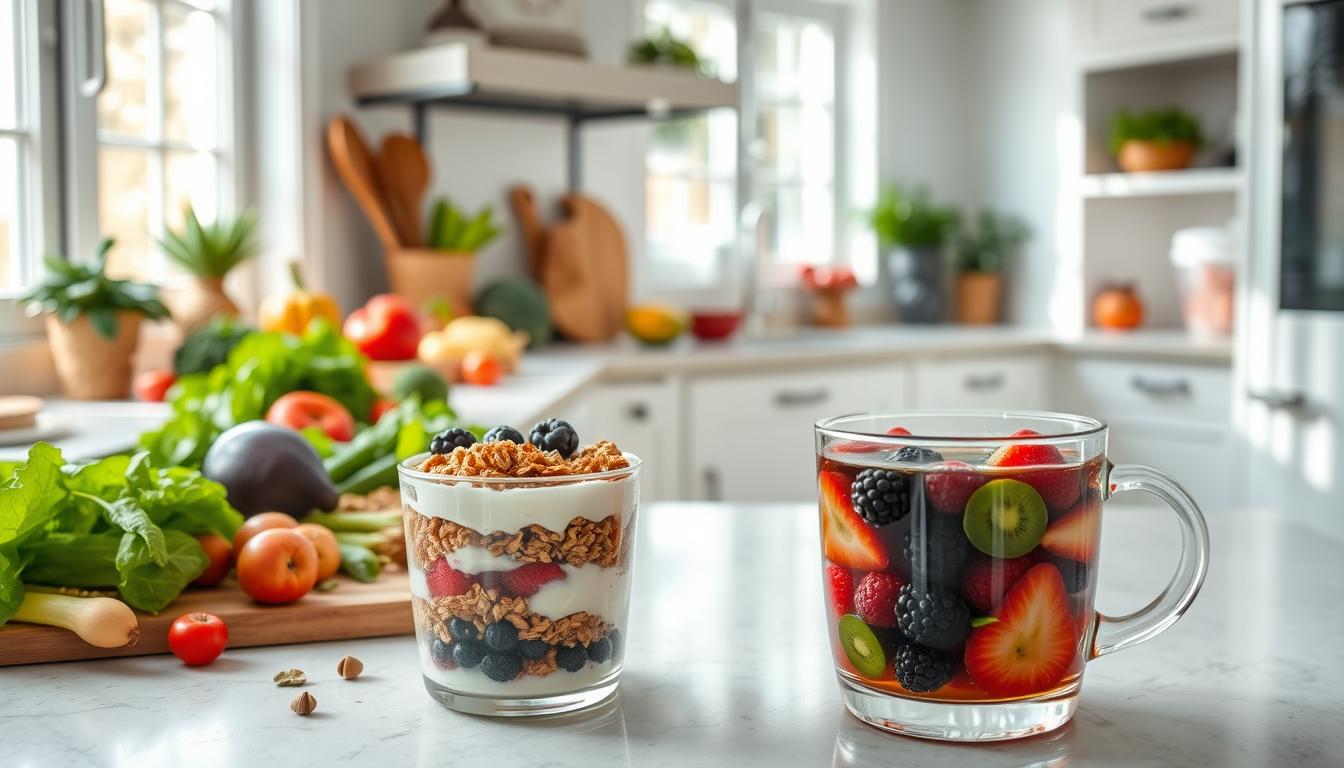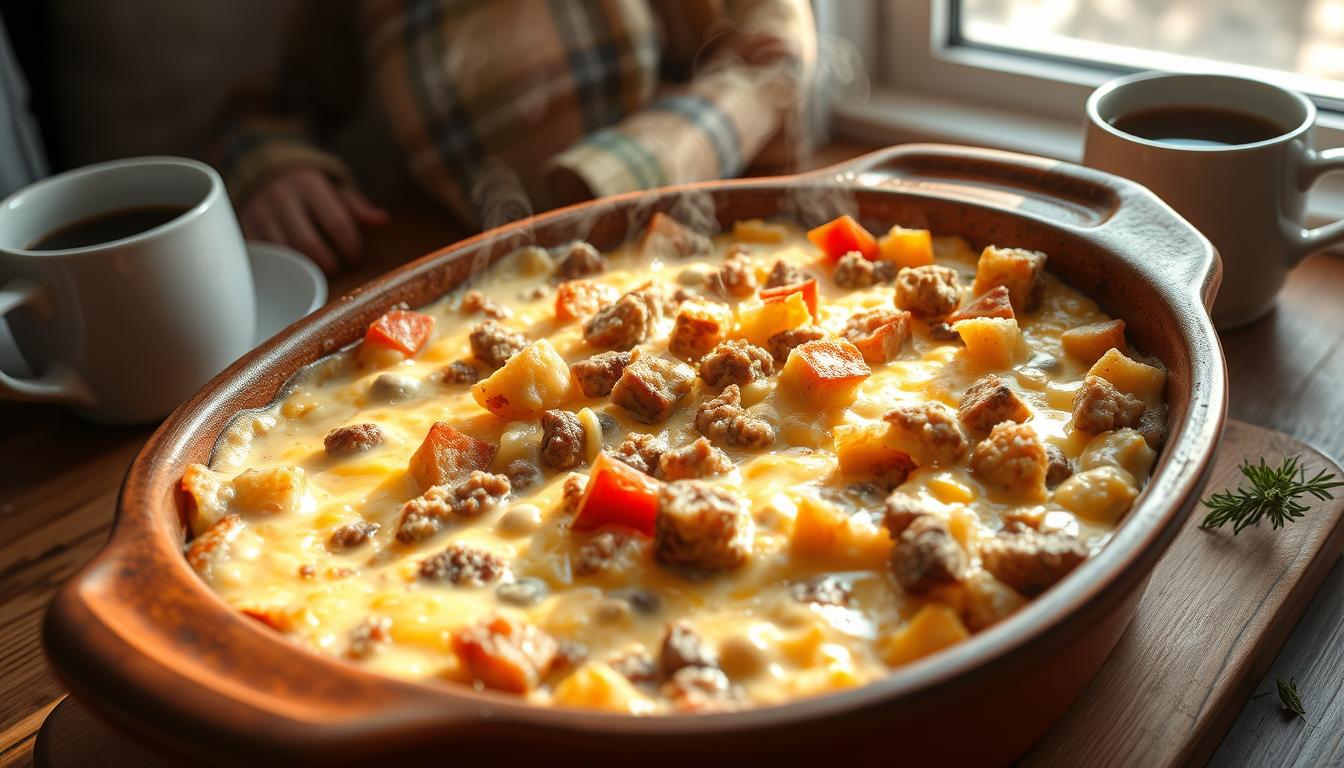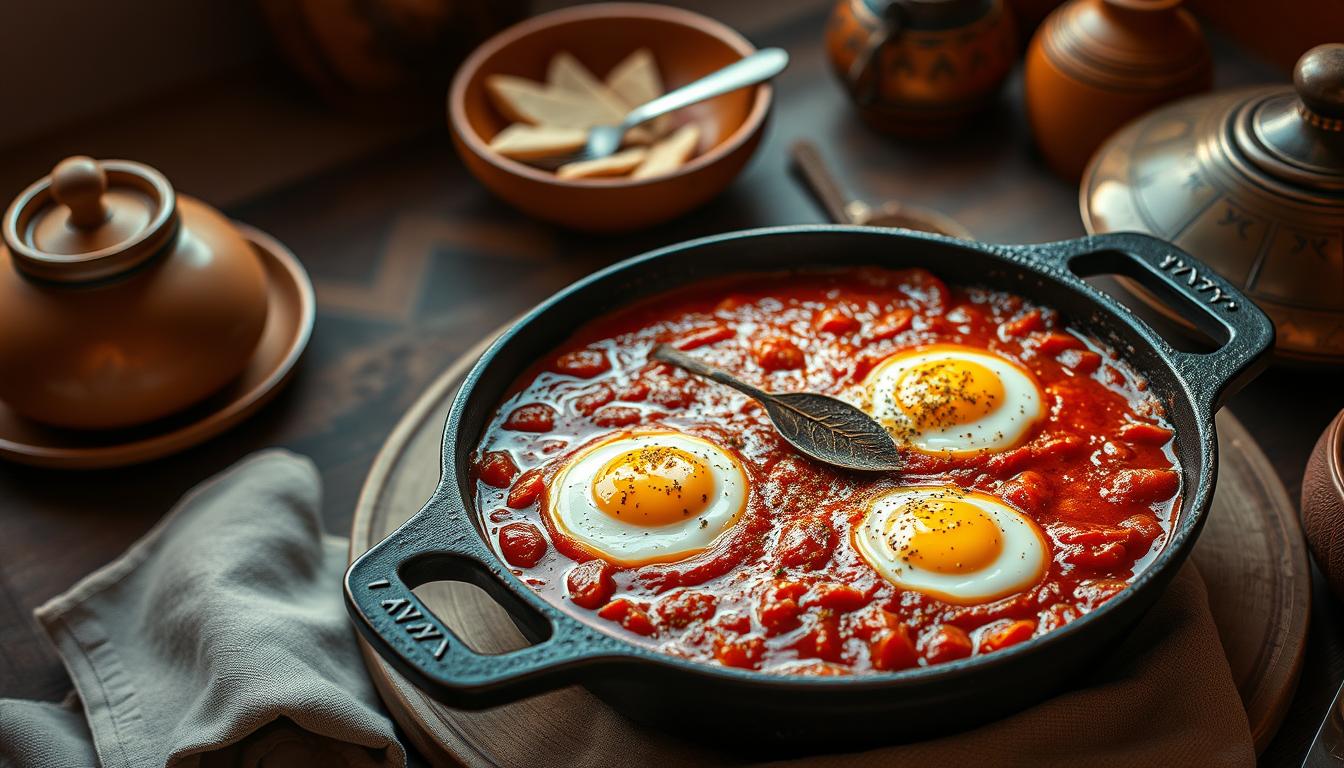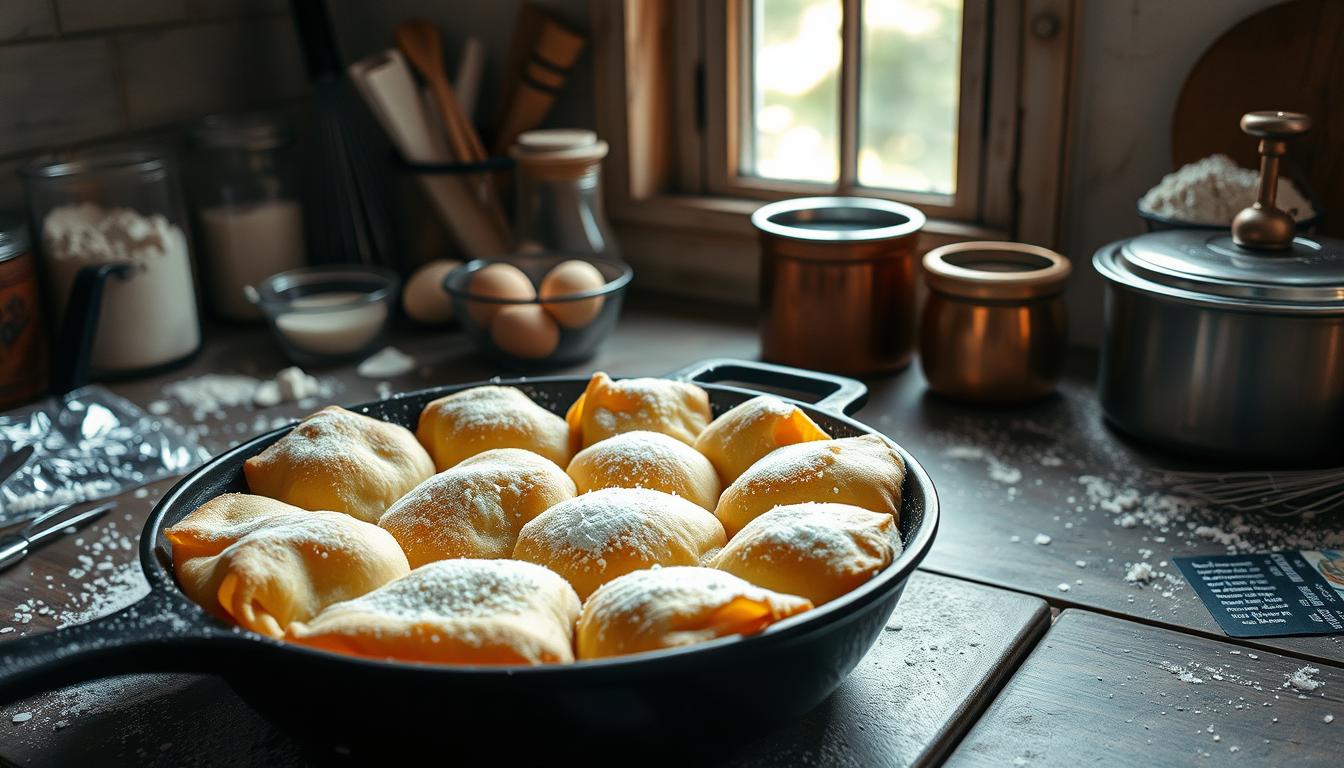Find the Best Egg Benedict for Breakfast: Top Recipes Inside
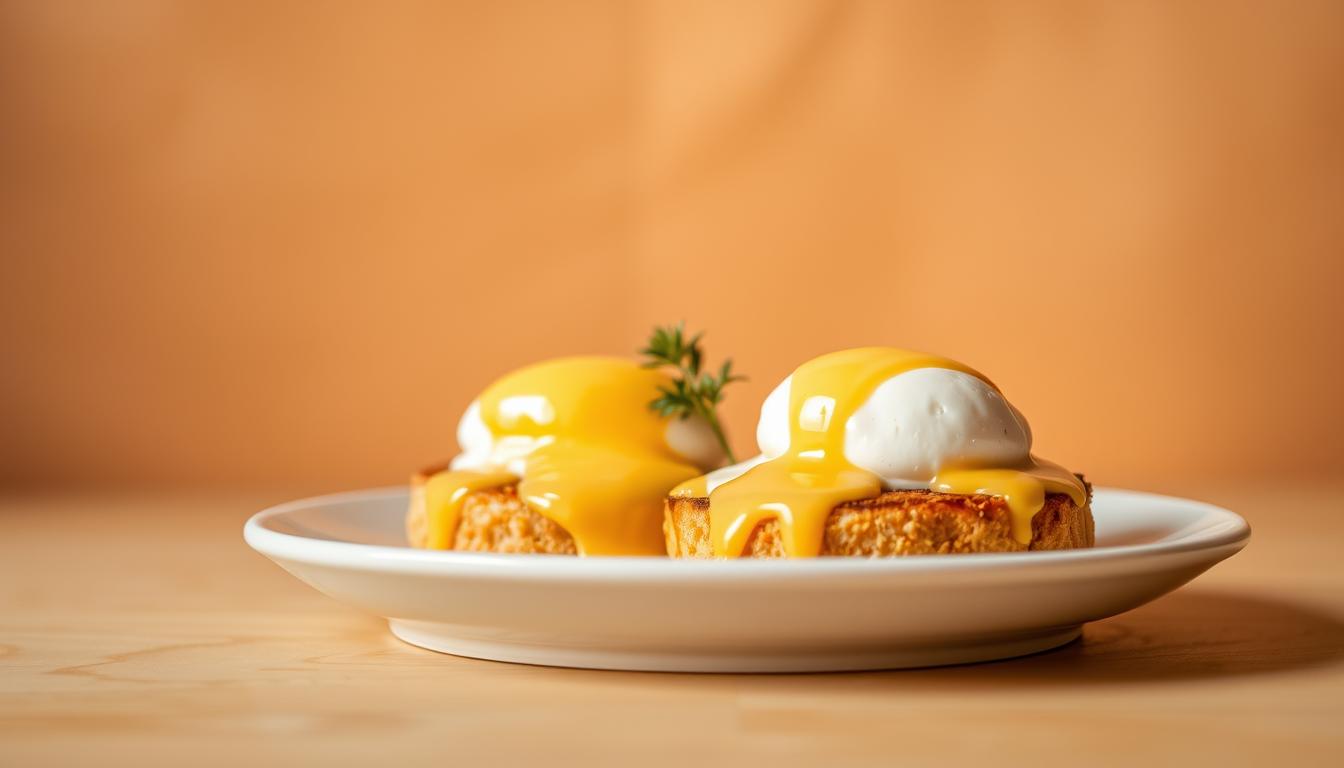
Find the Best Egg Benedict for Breakfast: Top Recipes Inside
Imagine starting your day with a dish that’s both decadent and delicious – a perfectly crafted Eggs Benedict. This beloved breakfast classic has been a staple in American cuisine for generations, and its enduring popularity is a testament to its timeless appeal.
With its delicate balance of poached eggs, savory Canadian bacon, toasted English muffins, and rich hollandaise sauce, Eggs Benedict is more than just a meal – it’s an experience. In this article, we’ll guide you through the process of creating this brunch favorite in the comfort of your own kitchen.
Key Takeaways
- Master the art of making restaurant-quality Eggs Benedict at home
- Learn the secrets to creating the perfect hollandaise sauce
- Discover creative variations to customize this breakfast classic
- Find valuable tips and troubleshooting advice for a flawless dish
- Understand the importance of selecting the freshest ingredients
What Makes the Perfect Eggs Benedict
When it comes to breakfast or brunch, few dishes can rival the timeless appeal of Eggs Benedict, a culinary classic that continues to captivate diners worldwide. The perfect Eggs Benedict is more than just a meal; it’s an experience that combines flavors, textures, and presentation in a way that few other dishes can match.
The Classic Components of Eggs Benedict
At its core, Eggs Benedict consists of several key components that work together to create its signature taste and appeal. These include poached eggs, Canadian bacon, English muffins, and hollandaise sauce. Each element plays a crucial role in the overall dish, with the poached eggs providing creaminess, the Canadian bacon adding a savory element, the English muffins offering a crunchy base, and the hollandaise sauce bringing everything together with its rich, tangy flavor.
Why Eggs Benedict Remains a Breakfast Favorite
Eggs Benedict has managed to remain a beloved breakfast and brunch staple for numerous reasons. Its enduring popularity can be attributed to its perfect balance of flavors and textures, as well as its luxurious and indulgent nature. The dish is not only satisfying but also provides a sense of occasion, making it perfect for special events or leisurely weekend brunches. Moreover, its versatility allows for various adaptations and creative interpretations while maintaining the essence of the classic recipe.
Essential Ingredients for the Best Egg Benedict for Breakfast
Crafting the ultimate Eggs Benedict requires attention to detail in choosing its essential ingredients. You need to focus on the quality of each component to ensure a delicious and satisfying breakfast experience.
English Muffins: The Foundation
The foundation of a great Eggs Benedict is the English muffin. You want a muffin that is toasted to perfection, providing a subtle crunch and a soft interior. Look for high-quality English muffins with nooks and crannies to hold the egg and sauce effectively.
Canadian Bacon vs. Other Options
Canadian bacon is a traditional choice for Eggs Benedict, offering a leaner and more delicate flavor than regular bacon. However, you can experiment with other options like ham or spinach for a different twist. The key is to choose a protein that complements the other ingredients.
Selecting the Freshest Eggs
The quality of eggs is paramount when making Eggs Benedict, as the poached egg is a central component of the dish. Fresh eggs produce the best poached eggs because their whites are thicker and more cohesive. To test for freshness, place an egg in a bowl of water—fresh eggs will lie flat on their sides. For poaching, large eggs are ideal, and opting for organic or free-range eggs can add more flavor. Using fresh eggs will yield a tighter, cleaner poached egg.
Mastering the Perfect Poached Egg
Elevate your Eggs Benedict by learning the art of poaching eggs with ease. A perfectly poached egg can make all the difference in this classic breakfast dish. To achieve this, you’ll need to understand the basics of egg poaching.
Step-by-Step Poaching Method
To poach an egg, start by bringing a pot of water to a simmer. Add a tablespoon of vinegar to the water to help the egg whites set faster. Crack an egg into a small bowl or ramekin. Create a whirlpool in the water by stirring it in one direction with a spoon. Gently pour the egg into the center of the whirlpool. Cook for 3-4 minutes, or until the whites are set and the yolks are cooked to your desired doneness. Use a slotted spoon to remove the poached egg from the water and drain off any excess water.
Troubleshooting Common Poaching Problems
Even experienced cooks encounter challenges when poaching eggs, but understanding common problems and their solutions can help you achieve perfect results every time.
- If your egg whites spread out too much in the water, your eggs may not be fresh enough—always use the freshest eggs possible for poaching.
- When wispy egg whites occur despite using fresh eggs, try straining the eggs through a fine-mesh sieve before poaching to remove the thin outer white.
- If your eggs stick to the bottom of the pan, make sure the water is at a proper simmer before adding the eggs, and consider using a non-stick pan.
- White foam forming on the water surface during poaching is normal—simply skim it off with a spoon if it bothers you.
- For eggs that cook unevenly, ensure your water maintains a consistent temperature throughout the cooking process.
- If the yolks break during poaching, you may be dropping the eggs from too high—gently slide them into the water from just above the surface.
- When poached eggs turn out rubbery, you’ve likely overcooked them—remember that they will continue cooking slightly after removal from the water.
Hollandaise Sauce: The Heart of Eggs Benedict
At the core of eggs benedict lies the decadent hollandaise sauce, a rich and creamy emulsion that elevates this breakfast dish to new heights. This sauce is not just a condiment; it’s an integral component that brings all the flavors together.
Traditional Hollandaise Method
The traditional method of making hollandaise sauce involves slowly whisking melted butter into egg yolks while applying gentle heat. This process requires patience and a steady hand to ensure the sauce emulsifies correctly. To start, combine egg yolks, lemon juice, and a pinch of salt in a heatproof bowl. Set the bowl over a pot of simmering water, making sure the bottom of the bowl isn’t touching the water.
Slowly pour the melted butter into the egg yolks while continuously whisking. The key is to add the butter gradually, allowing the mixture to thicken before adding more. This method demands constant attention, but the result is a smooth, creamy sauce.
Quick Blender Hollandaise Recipe
For a quicker alternative, you can make hollandaise sauce using a blender. Combine lemon juice, egg yolks, and cayenne pepper in the blender. With the blender running, slowly stream in melted butter until the sauce is a creamy, light yellow color. This method is faster and less labor-intensive than the traditional technique.
How to Fix Broken Hollandaise Sauce
Even experienced chefs occasionally end up with a broken or separated hollandaise sauce. Don’t panic; it can usually be salvaged. If your sauce breaks, try adding 1-2 teaspoons of boiling water while whisking vigorously. Alternatively, start fresh with a new egg yolk and slowly whisk in the broken sauce. Adjust the consistency and taste as needed by adding warm water, softened butter, lemon juice, or salt.
By mastering the art of making hollandaise sauce, you can elevate your eggs benedict to a truly luxurious breakfast experience. Whether you choose the traditional method or the quick blender recipe, the key is to be patient and attentive to the sauce’s texture and flavor.
Assembling Your Eggs Benedict
To create a visually appealing and delicious Eggs Benedict, follow a systematic assembly process. This involves toasting English muffins and warming Canadian bacon slices, poaching eggs to perfection, and preparing a rich hollandaise sauce.
Proper Layering Technique
The key to a well-assembled Eggs Benedict is in the layering. Start with toasted English muffins on a plate, followed by a slice of warmed Canadian bacon on top of each muffin half. Next, place a poached egg on the Canadian bacon, and finally, spoon the warm hollandaise sauce over the egg. This layering ensures that each component is showcased and that the dish is balanced in terms of texture and flavor.
Timing Tips for Serving Everything Hot
Timing is crucial when serving Eggs Benedict. To ensure everything is hot and ready at the same time, start by toasting the English muffins and warming the Canadian bacon in the oven at 400°F for about 10 minutes. Prepare the hollandaise sauce ahead of time, as it can be held at room temperature for up to an hour. Poach the eggs just before assembly, as they cook quickly. For a crowd, you can poach eggs in advance and reheat them briefly in simmering water. Setting up an assembly station with all components ready will help you make eggs benedict efficiently and serve a hot, satisfying meal.

- Prepare components in advance to save time.
- Use a systematic approach to layering.
- Keep the hollandaise sauce warm until serving.
Top Eggs Benedict Recipes to Try
The versatility of Eggs Benedict makes it a perfect canvas for culinary creativity. You can experiment with different ingredients to create unique variations that suit your taste preferences.
Classic Eggs Benedict Recipe
The classic Eggs Benedict recipe is a timeless breakfast favorite that consists of toasted English muffins topped with Canadian bacon, poached eggs, and rich hollandaise sauce. To make it, you’ll need high-quality ingredients, including fresh eggs and good-quality Canadian bacon. Toasted English muffins provide a sturdy base for the dish, while the hollandaise sauce adds a luxurious touch.
For an authentic experience, use the traditional method to prepare the hollandaise sauce, slowly whisking egg yolks with melted butter to achieve a smooth, creamy consistency.
Eggs Florentine Variation
For a healthier twist on the classic, try the Eggs Florentine variation. This version substitutes spinach for the Canadian bacon, adding a nutritious and flavorful element to the dish. Simply wilt fresh spinach in a pan before assembling the Eggs Benedict. The earthy flavor of spinach pairs beautifully with the richness of the hollandaise sauce and the poached eggs.
To enhance the flavor, consider adding a sprinkle of nutmeg or a squeeze of fresh lemon juice over the spinach.
Smoked Salmon Benedict
Smoked Salmon Benedict, sometimes called “Eggs Royale,” offers a sophisticated twist on the classic recipe by replacing Canadian bacon with luxurious smoked salmon. This elegant variation brings a delicate smokiness and subtle seafood flavor that pairs beautifully with the richness of the hollandaise sauce. Use high-quality cold-smoked salmon (lox) sliced thinly for the best texture and flavor—about 2 ounces per serving is ideal.
Consider adding a thin layer of cream cheese on the toasted English muffins before placing the smoked salmon for an extra creamy element. A squeeze of fresh lemon juice over the salmon brightens the flavors and cuts through the richness of the dish. For the hollandaise sauce, consider adding a teaspoon of fresh dill or a few capers to complement the salmon’s flavor profile.
Make-Ahead Tips for Stress-Free Breakfast
Breakfast just got easier with these make-ahead tips for Eggs Benedict. Preparing Eggs Benedict in advance can significantly reduce the stress associated with making this complex dish. By breaking down the preparation into manageable components, you can enjoy a delicious breakfast without the last-minute rush.
Preparing Components in Advance
To make the most of your Eggs Benedict preparation, identify the components that can be made ahead. While poached eggs are best made fresh, you can store and reheat leftoverhollandaise sauce. Canadian bacon can be cooked in advance and reheated when needed. Toasting English muffins just before serving is recommended for the best texture.
Reheating and Assembly Strategies
Reheating components properly is crucial for enjoying make-ahead Eggs Benedict that tastes freshly made. To reheat pre-poached eggs, bring a pot ofwaterto a very gentle simmer, then lower the cold eggs into thewaterfor 30-45minutesjust until warmed through. Forhollandaise sauce, use lowheat(20% power in a microwave or a double boiler) and stir frequently to prevent thesaucefrom breaking. If yourhollandaise sauceseparates during reheating, add a teaspoon of hotwaterand whisk vigorously to re-emulsify it.
Here’s a summary of reheating and assembly tips in a tabular format:
| Component | Reheating Method | Timing |
|---|---|---|
| Poached Eggs | Gentle simmer in water | 30-45 seconds |
| Hollandaise Sauce | Low heat or double boiler | Until warm, stirring frequently |
| Canadian Bacon | Skillet or microwave | Just until warmed |
| English Muffins | Toast just before serving | N/A |
For the most efficient assembly process, arrange all components in order of use and have warmed plates ready to receive the completed Eggs Benedict. Consider setting up a build-your-own Eggs Benedict bar with all components kept warm in appropriate serving dishes when preparing for a group.
Common Mistakes to Avoid When Making Eggs Benedict
To ensure your Eggs Benedict turns out right, it’s crucial to avoid some frequent errors. Making this dish can be challenging, but being aware of the common pitfalls can significantly improve your results.
Hollandaise Pitfalls
One of the most critical components of Eggs Benedict is the hollandaise sauce. Some people worry about raw eggs in their hollandaise sauce, but the eggs are cooked slowly to avoid curdling, resulting in a thicker, yummy sauce. However, there are a few mistakes to watch out for. Avoid applying hollandaise sauce that’s too thick, as it makes it difficult to get the proper sauce-to-egg ratio in each bite.

Poaching and Assembly Errors
Even with perfect hollandaise, Eggs Benedict can be compromised by common poaching and assembly mistakes. Here are some key errors to avoid:
- Using boiling water instead of simmering water can tear apart the egg whites, resulting in stringy, messy poached eggs.
- Forgetting to add vinegar to the poaching water can make it harder for the egg whites to set properly around the yolk.
- Cracking eggs directly into the poaching pan rather than using a small cup or ramekin as an intermediary can result in scattered whites.
- Overcooking poached eggs leads to firm, chalky yolks instead of the runny consistency that makes Eggs Benedict special.
- Failing to properly drain poached eggs before assembly can make the English muffin soggy with excess water.
- Assembling components too far in advance causes everything to cool down and the muffin to become soggy—timing is crucial.
By being mindful of these common mistakes, you can create a delicious Eggs Benedict with perfectly poached eggs and a rich, creamy hollandaise sauce, all on a toasted English muffin on the side.
Conclusion
By following this guide, you’ve taken the first step towards becoming an Eggs Benedict expert. Mastering this dish allows you to bring a restaurant-quality breakfast experience into your own home, impressing family and friends with your culinary skills.
Remember, the key to the best egg benedict for breakfast lies in using quality ingredients, mastering the hollandaise sauce, and perfecting your egg poaching technique. Don’t be discouraged by initial challenges—each attempt will improve your skills and bring you closer to breakfast perfection.
Feel free to experiment with variations once you’ve mastered the classic recipe. With the comprehensive tips and techniques provided, you’re well-equipped to create an exceptional Eggs Benedict experience in your own kitchen, ready in just a few minutes and enhanced with a touch of cayenne or a squeeze of lemon.

